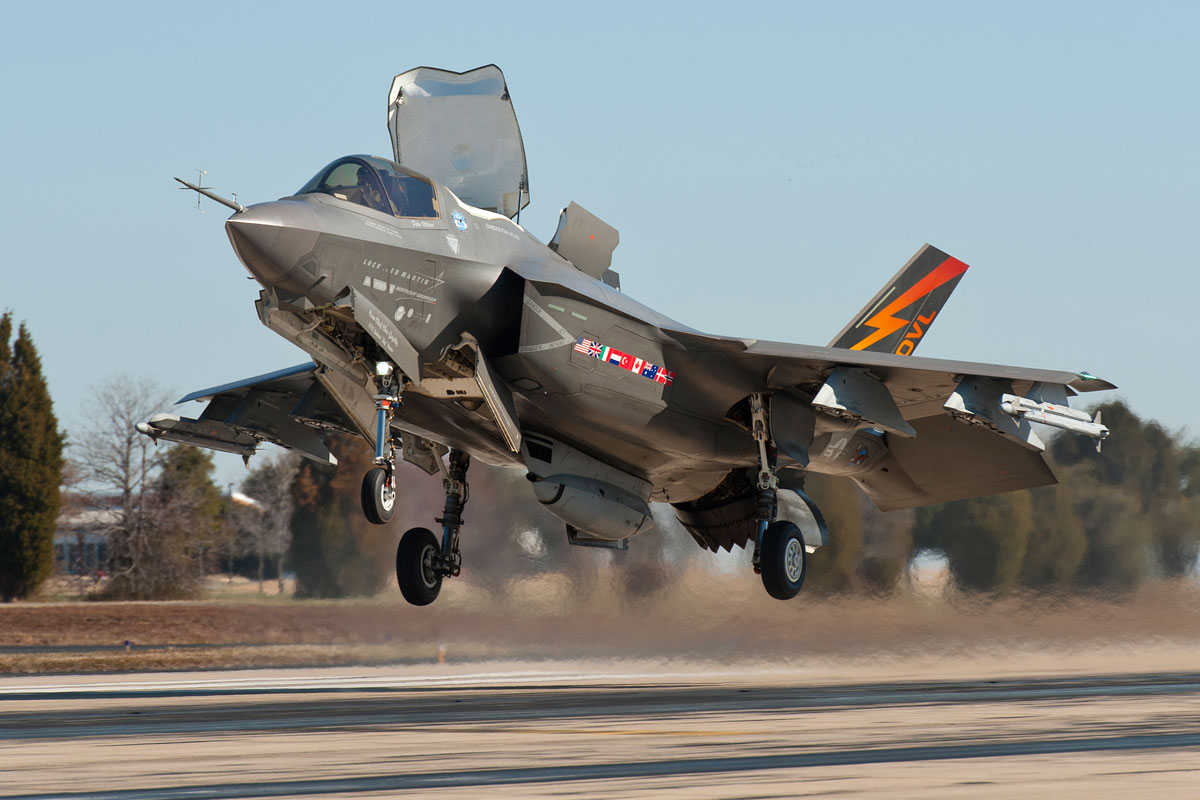Sure, the F-22 Raptor and F-35 Lightning II aren’t ending up in an actual dogfight, but if they did, the ultimate winner would be a very close call.
Fifth-gen fighters, like the F-22 Raptor and F-35 Lightning II, could probably give UFOs a run for their money when it comes to the tech they’re packed with! From stealth technology to the best avionics that make them more maneuverable than nearly everything else in the sky, the F-22 and F-35 were pretty much the best of the best. You won’t find more advanced military jets than these around, in a lot of ways. At least until the sixth-gen fighters come along and show them up.
Although there are other very powerful aircraft like the French Rafale or Eurofighter Typhoon, among other new contenders from Russia and China, many consider the F-22 Raptor and F-35 Lighting II the best in the world right now. While there’s no chance either of these would ever come up against each other in a dogfight considering they’re stealth aircraft, there’s no fan of the two that hasn’t wondered which one was better. So, can the super maneuverable F-22 win against the newer F-35, or will the F-35’s advanced electronics give it the edge?
Why Is the F-22 Being Retired?

The Lockheed Martin F-22 Raptor was perhaps the most advanced air superiority fighter jet in the world. The F-22 Raptor fighter was designed as a single-seat, all-weather stealthy tactical fighter that made its first flight on December 7, 1997. Which does mean it’s getting on in years compared to some of the newer fifth-generation jets around.
Though F-22 may be the most efficient air superiority fighter, that doesn’t mean it isn’t capable enough in other roles like ground attacks and electronic warfare. Lockheed Martin equips the aircraft with the most modern systems and features a military jet could carry.
The fifth-generation fighter has excellent stealth capabilities that help it fly unnoticed in the skies. That feature of the jet was achieved after numerous design choices made by both Lockheed Martin and Boeing.
Other stealth features such as reduced acoustic signature, and reduced visibility to the naked eye also get applied to the jet. Lockheed Martin’s F-22 is an extremely fast airplane – it can travel at more than Mach 2 with afterburners on the engines – 1,535 mph. The F-22 Raptor’s top speed still puts it in a respectable spot in the list of fastest jets in the world, even over the newer F-35! That said, the F-22 can cruise at supersonic airspeeds, without using its afterburners, which is really saying something.
The main weapon bay, in the center underside of the fuselage of the F-22 has enough space for six LAU-142/A launchers for beyond-visual-range (long range) missiles. The other two side weapons bays have space for one LAU-141/A launcher each and are for short-range missiles, like Sidewinders.
It is impressive that the weapon bays need less than a second open for the missile launchers to shoot. This is a very short time that helps the Raptor remain its stealth profile and maintain stability at high speed, There’s also a Vulcan 20 mm cannon mounted at the right-wing – the F-22 can also carry bombs to operated as an air-to-ground combat machine.
However, the US military has found that it may cost too much to get the F-22 Block 20 jets combat-worthy in the coming years. The F-22, as great a fifth-gen fighter as it is, doesn’t have as cutting edge communications, weapons, or electronic warfare capabilities, compared to newer aircraft. So it’s pushing to retire a bunch of F-22s from service. It’s estimated the military will save $485 million a year by doing so! The money saved will of course go towards developing the USAF’s sixth-gen fighter jet.
What Is The F-35 Known For?

Another Lockheed Martin aircraft, the F-35 Lightning II, is a single-seat all-weather stealth multirole combat aircraft that first flew in December 2006. Unlike the F-22 Raptor jet, the F-35 has three variants. The F-35’s standout feature has to be its amazing array of sensors that help make it maneuverable, as well as giving pilots more tools to lock onto enemy aircraft.
The F-35B has short take-off and vertical-landing capabilities (STOVL) and gets used by the USMC as the vertical-landing is very useful during Marine missions. The F-35A features the typical conventional take-off and landing, and that’s why it gets used by the USAF. Last but not least, the F-35C got designed for aircraft carriers and is being operated by the US Navy.
Lockheed Martin’s F-35, with its single engine design, has a lower top speed than the F-22 of around Mach 1.6 – 1,228 mph. The cool part is that the all variants of the F-35 get to the same top speed, even with a full internal payload. And for Top Gun fans wondering what kind of G force the plane has been engineered to handle, the F-35 can take up to 9 Gs safely.
Interestingly, the F-35 has amazing range too, being able to fly over 1,200 miles thanks to its 18,250 lbs fuel tank capacity. The stealth profile of the F-35 Lighting II has been a result of the radar-absorbent materials usage and other stealth design aspects.
When it comes to the armament of the F-35 Lighting II, the options are almost unlimited. The design of the aircraft contains two internal weapon bays with four weapon stations, and it has the ability to carry missiles, bombs and more, like the F-22. It also has a cannon like the F-22 but this time it’s located on the left side.
Is The F-35 Better Than The F-22?
Let’s start by comparing one of their greatest features, stealth capabilities. In this area, both jets have almost equivalent stealth performance mainly because they are both built by the same company, Lockheed Martin, and were both meant to be air superiority fighters.
Besides the stealth capabilities of the jets, it’s really hard to compare the two aircraft. That’s mainly because the two jets aren’t meant to perform in the same roles even though there is some significant overlap in most modern usage.
The F-22 Raptor is the most powerful air superiority fighter in the world, while the F-35 is probably the most advanced multi-role fighter right now. That means that the Raptor is more effective in air-to-air combats (faster and could operate at higher altitude). The Lighting II is more versatile for a wider range of missions, though the F-22 is lighter and has a higher top speed.
One is the most capable jet in ‘dogfights’ and air superiority, while the other can perform decently at air-to-air combats, air-to-surface attacks, and basically any possible type of conflict. However, they are both fantastic fighter jets taken at face value. Many theorize that the F-35 may turn out to be superior thanks to its advanced sensor arrays though, which makes the pilot’s job easier.
Is There Any Sixth-Generation Fighter Jet?

The next-generation of fighter jets are around the corner, if you look far ahead enough. The USAF’s sixth-gen fighter jet is still some time away from being revealed, though many think it’ll have a fin-less design, like a stealth bomber. It will also likely be semi-autonomous, showing fighter jet tech can take inspiration from road cars too. With every year that passes and with further R&D and skunks works development, the level of technology and availability of new features pushes boundaries. So far, not much is known since the military is keeping a tight lid on things. But expect more countries to join the race for developing superior aircraft.
The next generation will feature even more powerful avionics and data systems as well as more powerful-yet-efficient power plants and nuclear capabilities. Some fighter jets like the venerable F-16 and Sweden’s own Saab Gripen are still in service and get updated with modern systems instead of replacing the entire plane. Upcoming planes like the BAE Systems ‘Tempest’ will utilize a ‘delta wing’ design and be much more powerful than the current Eurofighter Typhoon.
It will include powerful AI integration along with an advanced pilot helmet design that expands on the intelligent displays of the F-22 and F-35 with the ability to show the pilot streamlined information that gets prioritized depending on the situation with the ability to take over certain functions or even fly the plane by itself if the pilot gets incapacitated or if the mission requires an unmanned scenario.





